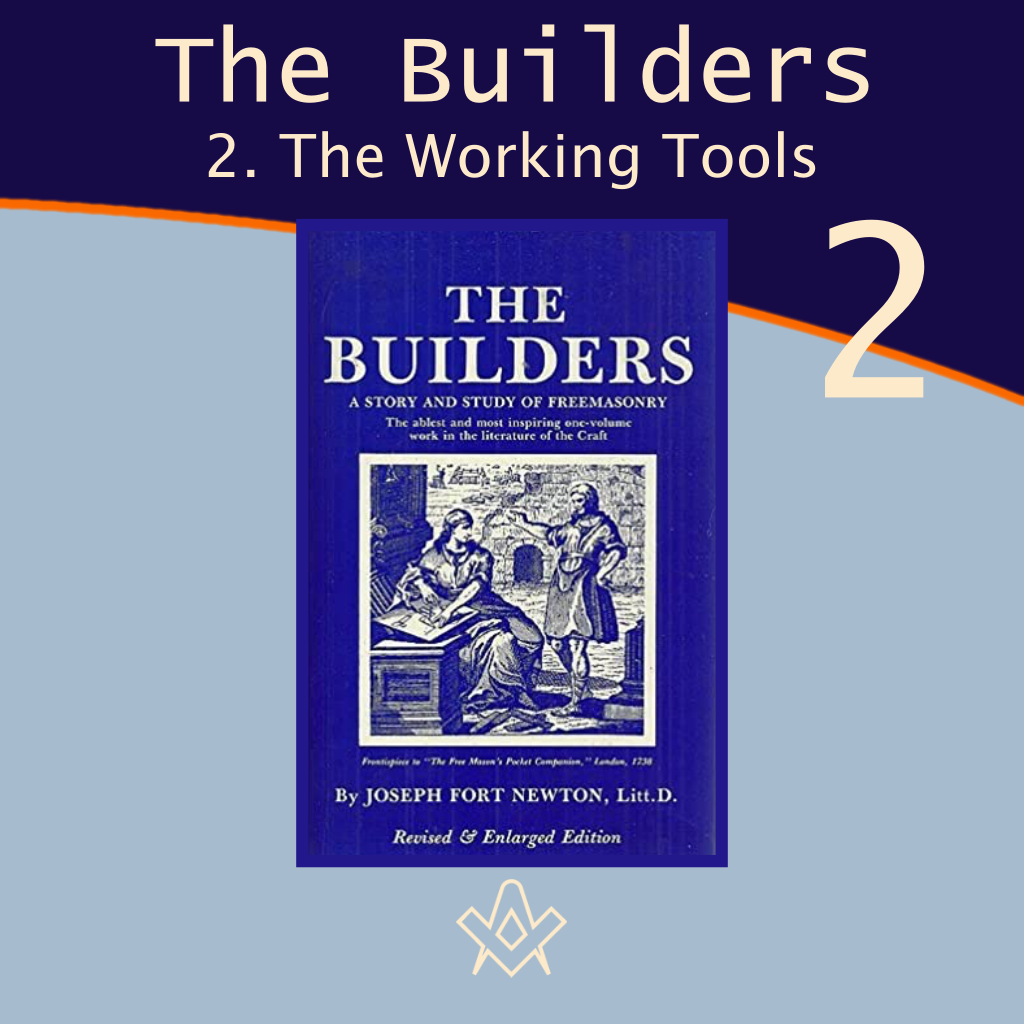In 1915, Joseph Fort Newton’s book, ‘The Builders: A Story and Study of Freemasonry’ was published.
It has become a Masonic classic in as much that it really does lay the foundations of knowledge for us to build upon.
It began to shape itself to my intellectual vision into something more imposing and majestic, solemnly mysterious and grand.
It seemed to me like the Pyramids in their loneliness, in whose yet undiscovered chambers may be hidden, for the enlightenment of coming generations, the sacred books of the Egyptians, so long lost to the world; like the Sphynx half buried in the desert.
In its symbolism, which and its spirit of brotherhood are its essence, Freemasonry is more ancient than any of the world’s living religions.
It has the symbols and doctrines which, older than himself, Zarathrustra inculcated; and it seemed to me a spectacle sublime, yet pitiful—the ancient Faith of our ancestors holding out to the world its symbols once so eloquent, and mutely and in vain asking for an interpreter.
And so, I came at last to see that the true greatness and majesty of Freemasonry consist in its proprietorship of these and its other symbols; and that its symbolism is its soul.
—ALBERT PIKE, Letter to Gould
Extracted from The Builders: A Story and Study of Freemasonry
Joseph Fort Newton
The Torch Press, Iowa, 1915
Chapter 2 – The Working Tools
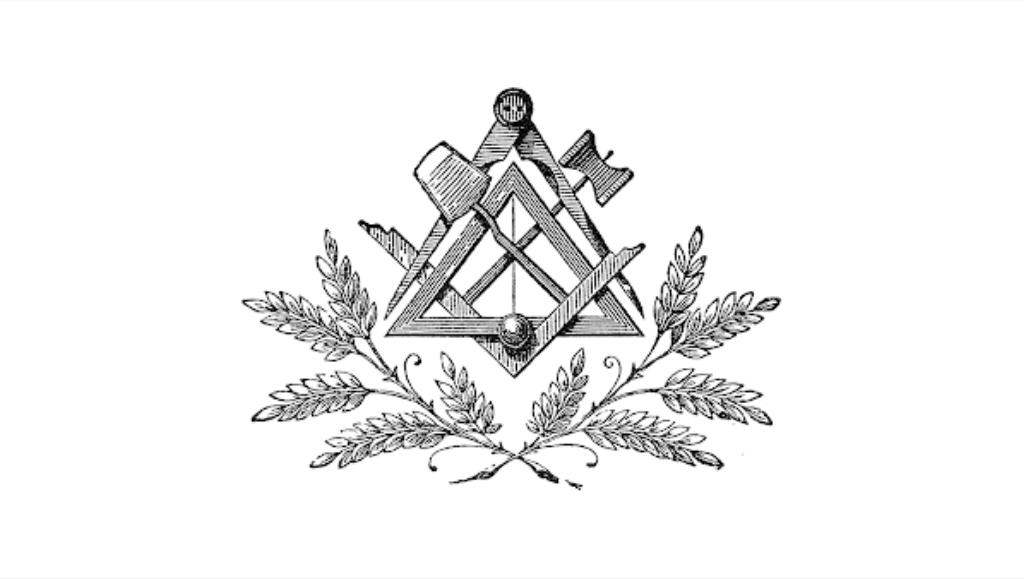
Never were truer words than those of Goethe in the last lines of Faust, and they echo one of the oldest instincts of humanity: “All things transitory but as symbols are sent.”
From the beginning man has divined that the things open to his senses are more than mere facts, having other and hidden meanings.
The whole world was close to him as an infinite parable, a mystical and prophetic scroll the lexicon of which he set himself to find.
Both he and his world were so made as to convey a sense of doubleness, of high truth hinted in humble, nearby things.
No smallest thing but had its skyey aspect which, by his winged and quick-sighted fancy, he sought to surprise and grasp.

Portrait of Johann Wolfgang von Goethe
IMAGE LINKED: wellcome collection Attribution 4.0 International (CC BY 4.0)
Let us acknowledge that man was born a poet, his mind a chamber of imagery, his world a gallery of art.
Despite his utmost efforts, he can in nowise strip his thought of the flowers and fruits that cling to it, withered though they often are.
As a fact, he has ever been a citizen of two worlds, using the scenery of the visible to make vivid the realities of the world Unseen.
What wonder, then, that trees grew in his fancy, flowers bloomed in his faith, and the victory of spring over winter gave him hope of life after death, while the march of the sun and the great stars invited him to “thoughts that wander through eternity.”
Symbol was his native tongue, his first form of speech—as, indeed, it is his last—whereby he was able to say what else he could not have uttered.
Such is the fact, and even the language in which we state it is “a dictionary of faded metaphors,” the fossil poetry of ages ago.
That picturesque and variegated maze of the early symbolism of the race we cannot study in detail, tempting as it is.
Indeed, so luxuriant was that old picture-language that we may easily miss our way and get lost in the labyrinth, unless we keep to the right path.
First of all throughout this study of prophecy let us keep ever in mind a very simple and obvious fact, albeit not less wonderful because obvious.
Socrates made the discovery—perhaps the greatest ever made—that human nature is universal.
By his searching questions he found out that when men think round a problem, and think deeply, they disclose a common nature and a common system of truth.
So there dawned upon him, from this fact, the truth of the kinship of mankind and the unity of mind.
His insight is confirmed many times over, whether we study the earliest gropings of the human mind or set the teachings of the sages side by side.
Always we find, after comparison, that the final conclusions of the wisest minds as to the meaning of life and the world are harmonious, if not identical.

Socrates. Line engraving by P. Pontius, 1638, after Sir P. P. Rubens.
IMAGE LINKED: wellcome collection Attribution 4.0 International (CC BY 4.0)
Here is the clue to the striking resemblances between the faiths and philosophies of widely separated peoples, and it makes them intelligible while adding to their picturesqueness and philosophic interest.
By the same token, we begin to understand why the same signs, symbols, and emblems were used by all peoples to express their earliest aspiration and thought.
We need not infer that one people learned them from another, or that there existed a mystic, universal order which had them in keeping.
They simply betray the unity of the human mind, and show how and why, at the same stage of culture, races far removed from each other came to the same conclusions and used much the same symbols to body forth their thought.
Illustrations are innumerable, of which a few may be named as examples of this unity both of idea and of emblem, and also as confirming the insight of the great Greek that, however shallow minds may differ, in the end all seekers after truth follow a common path, comrades in one great quest.
An example in point, as ancient as it is eloquent, is the idea of the trinity and its emblem, the triangle.
What the human thought of God is depends on what power of the mind or aspect of life man uses as a lens through which to look into the mystery of things.
Conceived of as the will of the world, God is one, and we have the monotheism of Moses.
Seen through instinct and the kaleidoscope of the senses, God is multiple, and the result is polytheism and its gods without number.
For the reason, God is a dualism made up of matter and mind, as in the faith of Zoroaster and many other cults.
But when the social life of man becomes the prism of faith, God is a trinity of Father, Mother, Child. Almost as old as human thought, we find the idea of the trinity and its triangle emblem everywhere—Śiva, Vishnu, and Brahma in India corresponding to Osiris, Isis, and Horus in Egypt.
No doubt this idea underlay the old pyramid emblem, at each corner of which stood one of the gods.
No missionary carried this profound truth over the earth. It grew out of a natural and universal human experience and is explained by the fact of the unity of the human mind and its vision of God through the family.

left: The Holy Trinity, Albrecht Dürer, 1511.
centre: The triad of Isis, Osiris, Horus, 664–30 B.C. Ac #42.2.3 – Met Museum Open Access API www.metmuseum.org
right: Trimurti; a three headed god with Shiva in the centre, Vishnu on the left and Brahma on the right, standing before Nandi, the cow. Gouache painting by an Indian painter.
IMAGE LINKED: wellcome collection Attribution 4.0 International (CC BY 4.0)
Other emblems take us back into an antiquity so remote that we seem to be walking in the shadow of prehistoric time.
Of these, the mysterious Swastika is perhaps the oldest, as it is certainly the most widely distributed over the earth.
As much a talisman as a symbol, it has been found on Chaldean bricks, among the ruins of the city of Troy, in Egypt, on vases of ancient Cyprus, on Hittite remains and the pottery of the Etruscans, in the cave temples of India, on Roman altars and Runic monuments in Britain, in Thibet, China, and Korea, in Mexico, Peru, and among the prehistoric burial-grounds of North America.
There have been many interpretations of it. Perhaps the meaning, most usually assigned to it is that of the Sanskrit word having in its roots an intimation of the beneficence of life, to be and well.
As such, it is a sign indicating:
“that the maze of life may bewilder, but a path of light runs through it: It is well is the name of the path, and the key to life eternal is in the strange labyrinth for those whom God leadeth.”

Mosaic swastika in an excavated Byzantine church in Shavei Tzion, (Israel) Photo: Etan J. Tal
IMAGE LINKED: wikimedia Attribution 4.0 International (CC BY 4.0)
Others hold it to have been an emblem of the Pole Star whose stability in the sky, and the procession of the Ursa Major around it, so impressed the ancient world.
Men saw the sun journeying across the heavens every day in a slightly different track, then standing still, as it were, at the solstice, and then returning on its way back.
They saw the moon changing not only its orbit, but its size and shape and time of appearing.
Only the Pole Star remained fixed and stable, and it became, not unnaturally, a light of assurance and the footstool of the Most High.
Whatever its meaning, the Swastika shows us the efforts of the early man to read the riddle of things, and his intuition of a love at the heart of life.
Akin to the Swastika, if not an evolution from it, was the Cross, made forever holy by the highest heroism of Love.
When man climbed up out of the primeval night, with his face to heaven upturned, he had a cross in his hand.
Where he got it, why he held it, and what he meant by it, no one can conjecture much less affirm itself a paradox, its arms pointing to the four quarters of the earth, it is found in almost every part of the world carved on coins, altars, and tombs, and furnishing a design for temple architecture in Mexico and Peru, in the pagodas of India, not less than in the churches of Christ.
Ages before our era, even from the remote time of the cliff-dweller, the Cross seems to have been a symbol of life, though for what reason no one knows.
More often it was an emblem of eternal life, especially when enclosed within a Circle which ends not, nor begins—the type of Eternity.
Hence the Ankh Cross or Crux Ansata of Egypt, scepter of the Lord of the Dead that never die.
There is less mystery about the Circle, which was an image of the disk of the Sun and a natural symbol of completeness, of eternity.
With a point within the center it became, as naturally, the emblem of the Eye of the World—that All-seeing eye of the eternal Watcher of the human scene.

Crux Ansata signs on a piece of cloth, 4-5th century AD
By Amitchell125 – Own work
IMAGE LINKED: wikimedia Attribution 4.0 International (CC BY 4.0)
Square, triangle, cross, circle—oldest symbols of humanity, all of them eloquent, each of them pointing beyond itself, as symbols always do, while giving form to the invisible truth which they invoke and seek to embody.
They are beautiful if we have eyes to see, serving not merely as chance figures of fancy, but as forms of reality as it revealed itself to the mind of man.
Sometimes we find them united, the Square within the Circle, and within that the Triangle, and at the center the Cross.
Earliest of emblems, they show us hints and foregleams of the highest faith and philosophy, betraying not only the unity of the human mind but its kinship with the Eternal—the fact which lies at the root of every religion, and is the basis of each.
Upon this Faith man builded, finding a rock beneath, refusing to think of Death as the gigantic coffin-lid of a dull and mindless universe descending upon him at last.

“〇△□” or The Universe (Edo period) By Sengai – catalogue, Public Domain
IMAGE LINKED: wikimedia Attribution 4.0 International (CC BY 4.0)
From this brief outlook upon a wide field, we may pass to a more specific and detailed study of the early prophecies of Masonry in the art of the builder.
Always the symbolic must follow the actual, if it is to have reference and meaning, and the real is ever the basis of the ideal.
By nature an Idealist, and living in a world of radiant mystery, it was inevitable that man should attach moral and spiritual meanings to the tools, laws, and materials of building.
Even so, in almost every land and in the remotest ages we find great and beautiful truth hovering about the builder and clinging to his tools.
Whether there were organized orders of builders in the early times no one can tell, though there may have been.
No matter; man mixed thought and worship with his work, and as he cut his altar stones and fitted them together he thought out a faith by which to live.
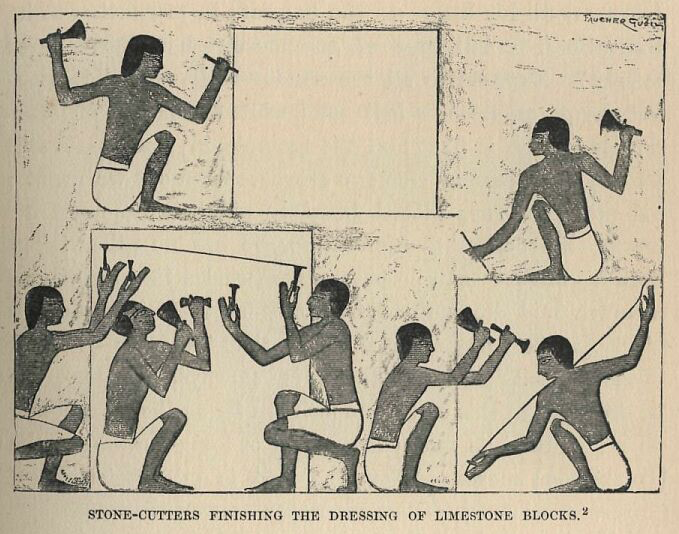
Stone-cutters finishing the dressing of limestone blocks Drawn by Faucher-Gudin, from Rosellini, Monumenti civili, pl. xlviii. 2.
IMAGE LINKED: wikimedia Attribution 4.0 International (CC BY 4.0)
Not unnaturally, in times when the earth was thought to be a Square the Cube had emblematical meanings it could hardly have for us.
From earliest ages it was a venerated symbol, and the oblong cube signified immensity of space from the base of earth to the zenith of the heavens.
It was a sacred emblem of the Lydian Kubele, known to the Romans in after ages as Ceres or Cybele—hence, as some aver, the derivation of the word “cube.”
At first rough stones were most sacred, and an altar of hewn stones was forbidden with the advent of the cut cube, the temple became known as the House of the Hammer—its altar, always in the center, being in the form of a cube and regarded as “an index or emblem of Truth, ever true to itself”.
Indeed, the cube, as Plutarch points out in his essay ‘On the Cessation of Oracles’ “is palpably the proper emblem of rest, on account of the security and firmness of the superficies”.
He further tells us that the pyramid is an image of the triangular flame ascending from a square altar; and since no one knows, his guess is as good as any.
At any rate, Mercury, Apollo, Neptune, and Hercules were worshiped under the form of a square stone, while a large black stone was the emblem of Buddha among the Hindoos, of Manah Theus-Ceres in Arabia, and of Odin in Scandinavia.
Everyone knows of the [Colossi] Stone of Memnon in Egypt, which was said to speak at sun-rise—as, in truth, all stones spoke to man in the sunrise of time.
More eloquent, if possible, was the Pillar uplifted, like the pillars of the gods upholding the heavens.
Whatever may have been the origin of pillars, and there is more than one theory, Evans has shown that they were everywhere worshiped as gods, indeed, the gods themselves were pillars of Light and Power, as in Egypt Horus and Sut [Set] were the twin-builders and supporters of heaven: and Bacchus among the Thebans.
At the entrance of the temple of Amenta [Amenti?], at the door of the house of Ptah—as, later, in the porch of the temple of Solomon—stood two pillars.
Still further back, in the old solar myths, at the gateway of eternity stood two pillars—Strength and Wisdom.
In India, and among the Mayas and Incas, there were three pillars at the portals of the earthly and skyey [sic] temple—Wisdom, Strength, and Beauty.
When man set up a pillar, he became a fellow-worker with Him whom the old sages of China used to call “the first Builder.”
Also, pillars were set up to mark the holy places of vision and Divine deliverance, as when Jacob erected a pillar at Bethel, Joshua at Gilgal, and Samuel at Mizpeh and Shen.
Always they were symbols of stability, of what the Egyptians described as “the place of establishing forever,”—emblems of the faith “that the pillars of the earth are the Lord’s, and He hath set the world upon them.”

The pillars of Wisdom, Strength, and Beauty. From Masonic Monitor by George Thornburgh, 1903
IMAGE LINKED: wikimedia Attribution 4.0 International (CC BY 4.0)

The Raising of the Djed Pillar, the Osiris Hall at Abydos. By Jon Bodsworth – http://www.egyptarchive.co.uk/html/seti_abydos_16.html, Copyrighted free use,
IMAGE LINKED: wikimedia Attribution 4.0 International (CC BY 4.0)
Long before our era we find the working tools of the Mason used as emblems of the very truths which they teach today.
In the oldest classic of China, The Book of History, dating back to the twentieth century before Christ, we read the instruction: “Ye officers of the Government, apply the compasses.”
Even if we begin where The Book of History ends, we find many such allusions more than seven hundred years before the Christian era.
For example, in the famous canonical work, called The Great Learning, which has been referred to the fifth century B. C., we read, that a man should abstain from doing unto others what he would not they should do to him; “and this,” the writer adds, “is called the principle of acting on the square.”
So also, Confucius and his great follower, Mencius. In the writings of Mencius, it is taught that men should apply the square and compasses morally to their lives, and the level and the marking line besides, if they would walk in the straight and even paths of wisdom and keep themselves within the bounds of honor and virtue.

Mencius, from Myths and Legends of China by E. T. C. Werner, 1922. By Chinese Artists – http://www.gutenberg.org/files/15250/15250-h/15250-h.htm#d0e5806, Public Domain,
IMAGE LINKED: wikimedia Attribution 4.0 International (CC BY 4.0)
In the sixth book of his philosophy we find these words:
A Master Mason, in teaching apprentices, makes use of the compasses and the square. Ye who are engaged in the pursuit of wisdom must also make use of the compass and square.
There are even evidences, in the earliest historic records of China, of the existence of a system of faith expressed in allegoric form, and illustrated by the symbols of building.
The secrets of this faith seem to have been orally transmitted, the leaders alone pretending to have full knowledge of them.
Oddly enough, it seems to have gathered about a symbolical temple put up in the desert, that the various officers of the faith were distinguished by symbolic jewels, and that at its rites they wore leather aprons.
From such records as we have it is not possible to say whether the builders themselves used their tools as emblems, or whether it was the thinkers who first used them to teach moral truths.
In any case, they were understood; and the point here is that, thus early, the tools of the builder were teachers of wise and good and beautiful truth.
Indeed, we need not go outside the Bible to find both the materials and working tools of the Mason so employed:
For every house is builded by some man; but the builder of all things is God . . . whose house we are.
Behold, I lay in Zion for a foundation a tried stone, a precious corner-stone, a sure foundation.
The stone which the builders rejected is become the head of the corner.
Ye also, as living stones, are built up into a spiritual house.
When he established the heavens I was there, when he set the compass upon the face of the deep, when he marked out the foundations of the earth: then was I by him as a master workman
The Lord stood upon a wall made by a plumbline, with a plumbline in his hand. And the Lord said unto me, Amos, what seest thou? And I said, A plumbline. Then said the Lord, Behold, I will set a plumbline in the midst of my people Israel: I will not again pass by them any more.
Ye shall offer the holy oblation foursquare, with the possession of the city.
And the city lieth foursquare, and the length is as large as the breadth.
Him that overcometh I will make a pillar in the temple of my God; and I will write upon him my new name.
For we know that when our earthly house of this tabernacle is dissolved, we have a building of God, an house not made with hands, eternal in the heavens.
If further proof were needed, it has been preserved for us in the imperishable stones of Egypt.
The famous obelisk, known as Cleopatra’s Needle, now in Central Park, New York, the gift to our nation from Ismail, Khedive of Egypt in 1878, is a mute but eloquent witness of the antiquity of the simple symbols of the Mason.
Originally it stood as one of the forest of obelisks surrounding the great temple of the Sun-god at Heliopolis, so long a seat of Egyptian learning and religion, dating back, it is thought, to the fifteenth century before Christ.
It was removed to Alexandria and re-erected by a Roman architect and engineer named Pontius, B. C. 22.
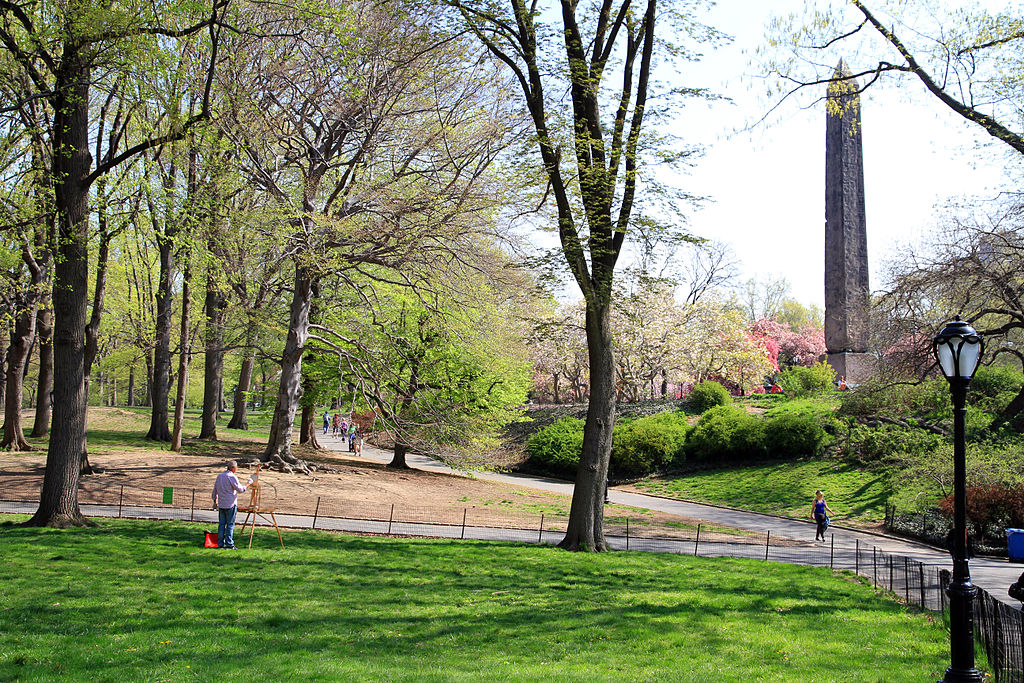
Cleopatra’s Needle Central Park, New York
IMAGE LINKED: wikimedia Attribution 4.0 International (CC BY 4.0)
When it was taken down in 1879 to be brought to America, all the emblems of the builders were found in the foundation.
The rough Cube and the polished Cube in pure white limestone, the Square cut in syenite, an iron Trowel, a lead Plummet, the arc of a Circle, the serpent-symbols of Wisdom, a stone Trestle-board, a stone bearing the Master’s Mark, and a hieroglyphic word meaning Temple—all so placed and preserved as to show, beyond doubt, that they had high symbolic meaning.
Whether they were in the original foundation, or were placed there when the obelisk was removed, no one can tell.
Nevertheless, they were there, concrete witnesses of the fact that the builders worked in the light of a mystical faith, of which they were emblems.
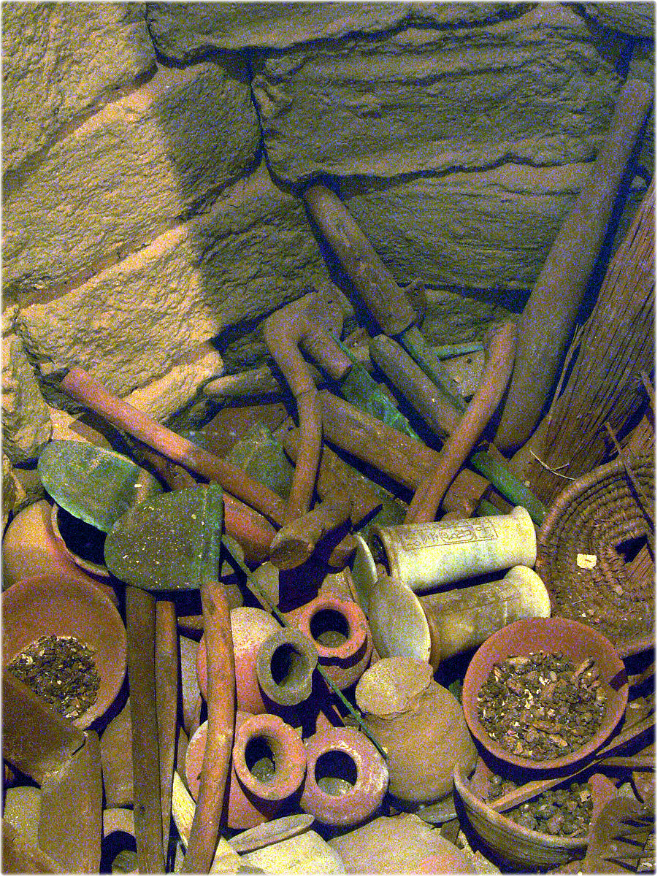
A reconstruction of an ancient Egyptian ‘Foundation Deposit’ originally found at Hatshepsut’s Mortuary Temple Deir el-Bahari, Thebes (c.1479-1458 BC). Before construction of a temple or monument, a ritual ceremony would be held known as ‘the stretching of the cord’. Pits were dug at specific points around the site and filled with votive objects.
IMAGE LINKED: Met Museum OA Public Domain licence.
Much has been written of buildings, their origin, age, and architecture, but of the builders hardly a word—so quickly is the worker forgotten, save as he lives in his work.
Though we have no records other than these emblems, it is an obvious inference that there were orders of builders even in those early ages, to whom these symbols were sacred; and this inference is the more plausible when we remember the importance of the builder both to religion and the state.
What though the builders have fallen into dust, to which all things mortal decline, they still hold out their symbols for us to read, speaking their thoughts in a language easy to understand.
Across the piled-up debris of ages they whisper the old familiar truths, and it will be a part of this study to trace those symbols through the centuries, showing that they have always had the same high meanings.
They bear witness not only to the unity of the human mind, but to the existence of a common system of truth veiled in allegory and taught in symbols.
As such, they are prophecies of Masonry as we know it, whose genius it is to take what is old, simple, and universal, and use it to bring men together and make them friends.
Shore calls to shore
That the line is unbroken.
Article by: Joseph Fort Newton
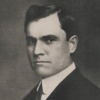
Rev. Newton (1880–1950) , was an American Baptist minister, authored a number of masonic books, including his best-known works, The Builders, published in 1914, and The Men’s House, published in 1923.
He received the third degree of Freemasonry on May 28, 1902 in Friendship Lodge No. 7, Dixon, Illinois, later affiliating with Mt. Hermon Lodge No. 263, Cedar Rapids, Iowa.
He also served as Grand Chaplain of the Grand Lodge of Iowa from 1911 to 1913 and Grand Prelate of the Grand Encampment of Knights Templar.
The Builders has been called "an outstanding classic in Masonic literature offering the early history of Freemasonry."

The Working Tools of Leadership: Applying the Teachings of Freemasonry
By: Michael J. Kurcab (Author)Michael Clevenger (Foreword)
The Working Tools of Leadership: Applying the Teachings of Freemasonry goes beyond typical Freemasonic exposés and discusses leadership development using the symbolism of the working tools found in Freemasonry.
Applied to work, family and community leadership roles, the working tools can provide valuable lessons in leadership.
This book, written through the author’s experiences, combines insight into the application of the ancient symbolism of Masonic tradition with a reader’s interactive journal to provide a workbook and instruction manual for future leaders of Masonic and, non-Masonic organizations alike.
Recent Articles: The Builders by Joseph Fort Newton
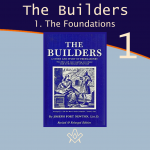 The Builders – 1 The Foundations Chapter 1. The Foundations Explore an outstanding classic in Masonic literature - an exposition of the early history and symbolism of Freemasonry – from the foundations upwards. |
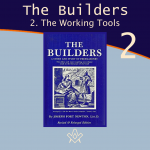 The Builders – 2 The Working Tools Chapter 2. The Working Tools - Explore an outstanding classic in Masonic literature - an exposition of the early history and symbolism of Freemasonry – from the foundations upwards. |
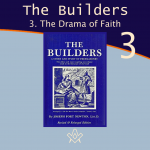 The Builders – 3 The Drama of Faith Chapter 3. The Drama of Faith - Explore an outstanding classic in Masonic literature - an exposition of the early history and symbolism of Freemasonry – from the foundations upwards. |
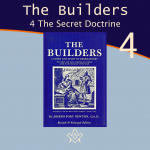 The Builders – 4 The Secret Doctrine Chapter 4. The Secret Doctrine - Explore an outstanding classic in Masonic literature - an exposition of the early history and symbolism of Freemasonry – from the foundations upwards. By Joseph Fort Newton |
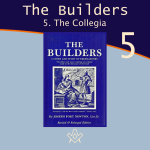 Chapter 5. The Collegia - If the laws of building were secrets known only to initiates, there must have been a secret Order of architects who built the temple of Solomon. Who were they? |
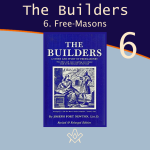 The Builders – 6 The Free-Masons Chapter 6. the Free-Masons - an examination into the history of the medieval guilds, their charges and regulations that form the base for the allegories and symbols in our modern versions of masonic craft ritual. By Joseph Fort Newton |
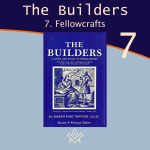 Chapter 7. the Fellowcrafts - an examination into the history of the medieval guilds, their charges and regulations that form the base for the allegories and symbols in our modern versions of masonic craft ritual. By Joseph Fort Newton |
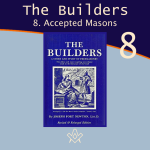 The Builders – 8 Accepted Masons Chapter 8. Accepted Masons - an examination into the history of accepted masons, and why did soldiers, scholars, antiquarians, clergymen, lawyers, and even the nobility ask to be accepted as members of the order of Free-masons? By Joseph Fort Newton |
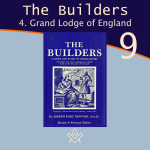 The Builders – 9 Grand Lodge of England Chapter 9. Grand Lodge of England - From every point of view, the organization of the Grand Lodge of England, in 1717, was a significant and far-reaching event. By Joseph Fort Newton |
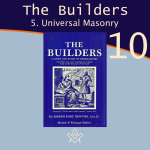 The Builders – 10 Universal Masonry Chapter 10. Universal Masonry - Henceforth, the Masons of England were no longer a society of handicraftsmen, but an association of men of all orders and every vocation, as also of almost every creed, |
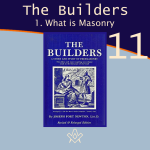 The Builders – 11 What is Masonry Chapter 11 "Masonry is the activity of closely united men who, employing symbolical forms borrowed principally from the mason's trade and from architecture, work for the welfare of mankind, striving morally to ennoble themselves and others, and thereby to bring about a universal league of mankind, which they aspire to exhibit even now on a small scale." |
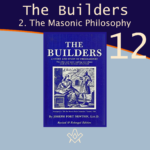 The Builders – 12 The Masonic Philosophy Chapter 12 When we look at Masonry in this large and mellow light, it is like a stately old cathedral, gray with age, rich in associations, its steps worn by innumerable feet of the living and the dead—not piteous, but strong and enduring. By Joseph Fort Newton |
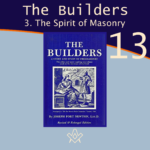 The Builders – 13 The Spirit of Masonry Chapter 13 Masonry is Friendship—friendship, first, with the great Companion, of whom our own hearts tell us, who is always nearer to us than we are to our-selves, and whose inspiration and help is the greatest fact of human experience. |
masonic knowledge
to be a better citizen of the world
share the square with two brothers

click image to open email app on mobile device


